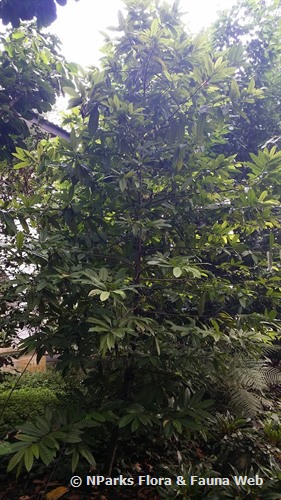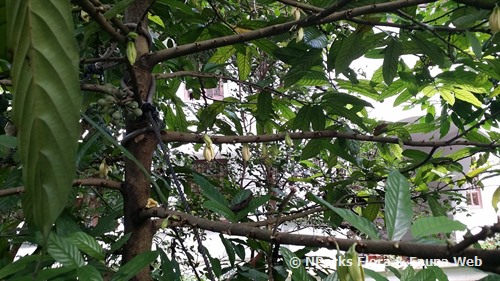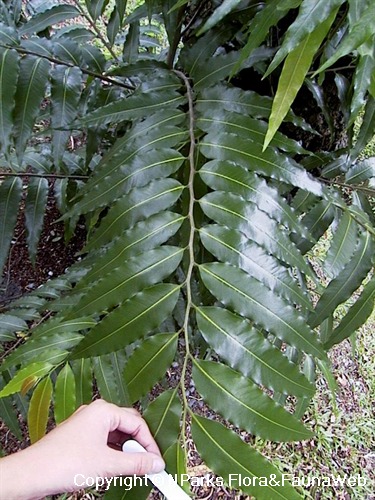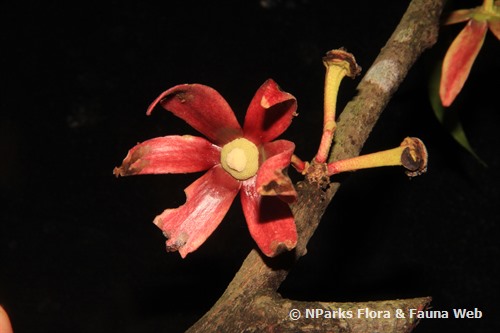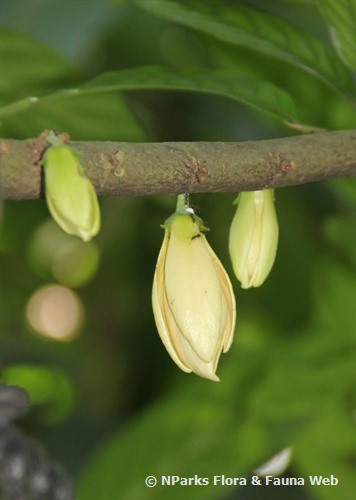
Back
Monoon hookerianum (King) B.Xue & R.M.K.Saunders
| Family Name: | Annonaceae |
| Synonyms: | Polyalthia hookeriana King |
| Common Name: | Mempisang, Sinai |
Name
Classifications and Characteristics
| Plant Division | Angiosperms (Flowering Seed Plants) |
|---|---|
| Plant Growth Form | Tree |
| Lifespan (in Singapore) | Perennial |
| Mode of Nutrition | Autotrophic |
| Plant Shape | Conical |
Biogeography
| Native Distribution | Myanmar, Thailand, Malaya |
|---|---|
| Native Habitat | Terrestrial |
| Preferred Climate Zone | Tropical |
| Local Conservation Status | Native to Singapore (Presumed Nationally Extinct (NEx)) |
Description and Ethnobotany
| Growth Form | It is a tree, up to 21 m tall. |
|---|---|
| Foliage | Leaves are obovate-elliptic or oblanceolate (12 – 17 cm long and 5 – 8 cm wide) and membranous. There are 10 or 11 pairs of veins, and both the nerves and midrib are hairy on both sides of the leaves. Petiole is 0.3 – 0.5 cm long and covered in dense hairs. |
| Flowers | Flower is creamish yellow and about 1.25 cm long. They occur in pairs from peduncles with 1 – 2 ovate bracts and broadly ovate sepals which is mostly free or connected at the base. Stamens are short with thick appendages. Ovary is oblong, hairy and only has 1 ovule. |
| Fruit | Fruit ripen red with numerous carpels, each contains a seed which is ovoid, smooth and has vertical furrow. |
Landscaping Features
| Desirable Plant Features | Ornamental Flowers, Fragrant |
|---|---|
| Landscape Uses | Parks & Gardens |
Plant Care and Propagation
| Light Preference | Full Sun |
|---|---|
| Water Preference | Moderate Water |
| Plant Growth Rate | Moderate |
| Rootzone Tolerance | Well-Drained Soils |
Image Repository
Others
| Master ID | 33041 |
|---|---|
| Species ID | 7455 |
| Flora Disclaimer | The information in this website has been compiled from reliable sources, such as reference works on medicinal plants. It is not a substitute for medical advice or treatment and NParks does not purport to provide any medical advice. Readers should always consult his/her physician before using or consuming a plant for medicinal purposes. |

